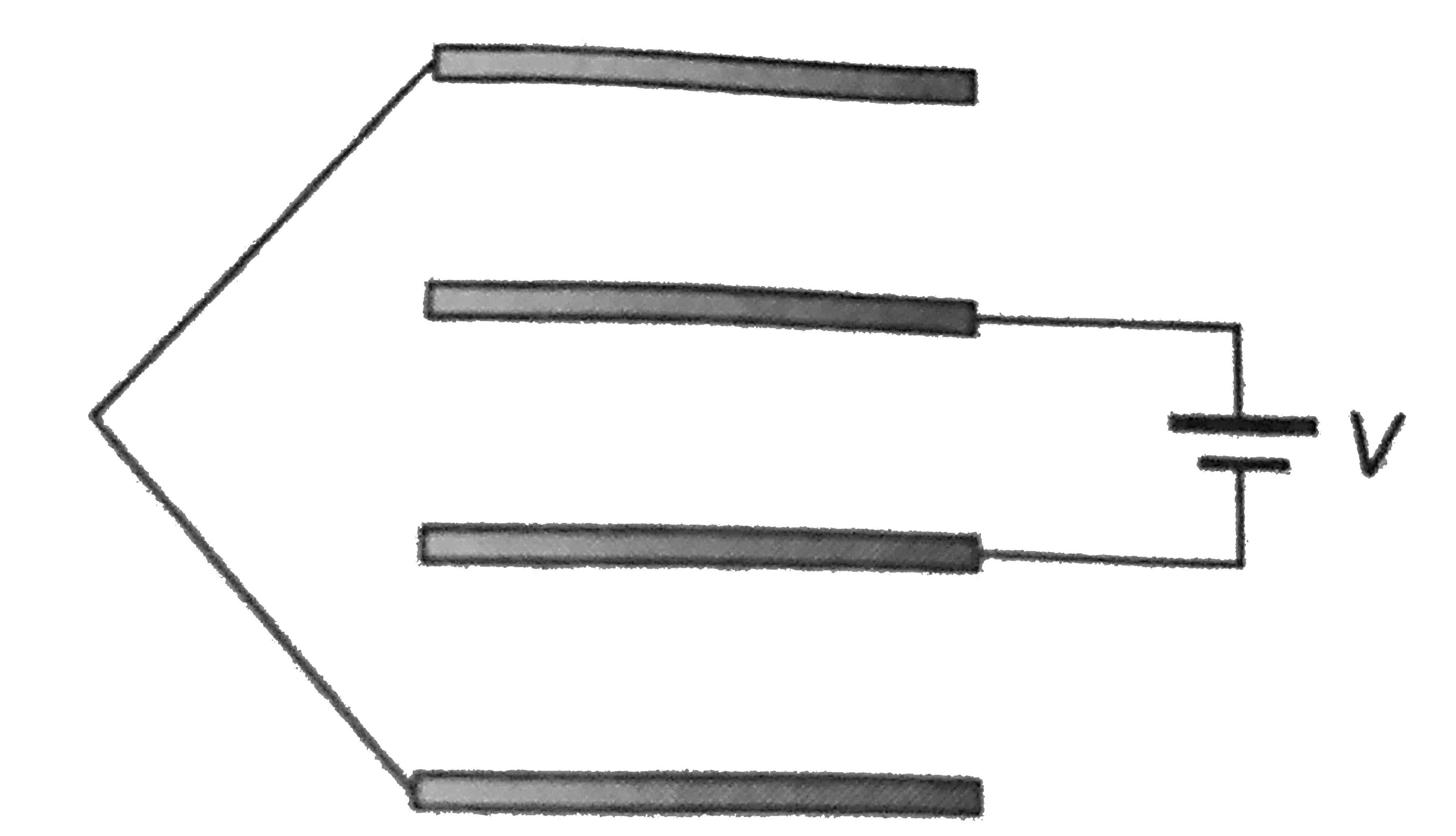A potential difference between plates of parrallel plate
3×10−3J
4×10−3J
6×10−3J
5×10−3J
The correct Answer is:A
Topper's Solved these Questions
Similar Questions
(a) Find the potential difference between the plates of a parallel plate capacitor of capacitance 5μF if a charge +800μC is placed on one plate and-200μC on another plate.
(b) The charege given to plate are as shown. The capacitance between the adjacent plates is C. find the charge on outer surface of plate 3, and potential difference between plate 1 and 2.
(c) If A is area of each plate and d is separation between adjacent plates, find the charge supplied by battery.
(d) Five idential capacitor plates each of area A are arranged such that adjacent plates are at a distance d apart. the plates are connected to a source of emf V as shown. what is the magnitude and nature of charge on plates 1 and 3 respectively?



View SolutionIn a parallel plate capacitor of capacitor 1μF two plates are given charges 2μC and 4μC the potential difference between the plates of the capacitor is
_2019_CBT2_E01_002_Q01.png)
View Solution
Knowledge Check
The plates of a capacitor are charged to a potential difference of 320 volt and are then connected across a resistor. The potential difference across the capacitor decays exponentially with time. After 1 sec the potential difference between the plates of the capacitor is 240 volts. what is the potential difference between the plates after 2 s?
A200 VB180 VC160 VD140 VIn a parallel plate capacitor of capacitor 1μF two plates are given charges 2μC and 4μC the potential difference between the plates of the capacitor is
 A2 voltB1 voltC4 voltD3 volt
A2 voltB1 voltC4 voltD3 voltFor uniform electric field, potential difference between the plate is
A1ε0QAdB1ε0AdQCε0QAdD1ε0QdA
The plates of a parallel-plate capacior are given equal positive charges .What will be the potential difference between the plates ? What will be the charges on the facing surfaces and on the outer surfaces ?
View SolutionThe plates of a parallel-plate capacior are given equal positive charges .What will be the potential difference between the plates ? What will be the charges on the facing surfaces and on the outer surfaces ?
View SolutionThe plates of a parallel plate capacitor are charged to a potential difference of 117 V and then connected across a resistor. The potential difference across the capacitor decreases exponentially with to time. After 1s the potential difference between the plates is 39 V, then after 2s from the start, the potential difference (in V) between the plates is
View SolutionA parallel -plate capacitor is connected to a battery that maintains a constant potential difference V between the plates. If the plates are pulled away from each other, increasing their separation, does the magnitude of the charge on the plates (a) increase, (b) decrease, or (c ) remain the same ?
View SolutionIf Q is the charge on the pates of a capacitor of capacitances C,V the potential difference between the plates, s the area of each plate and d the distance between the plates, the force of attraction between the plates is-
View Solution
